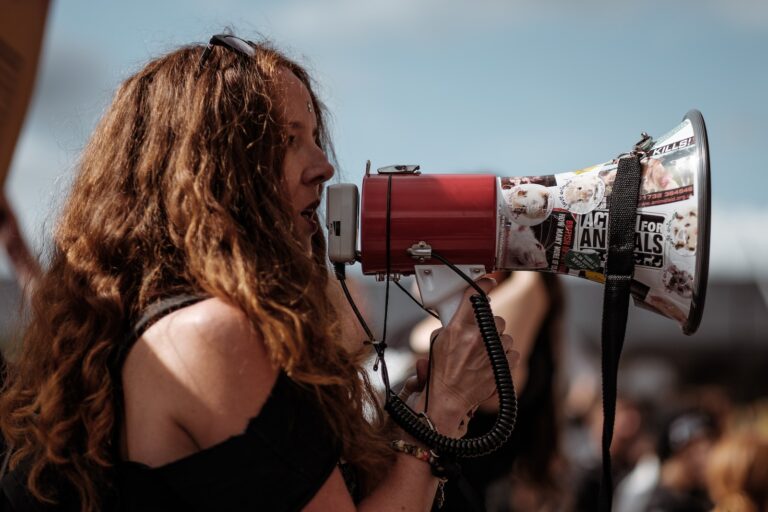Decoding Body Language and Nonverbal Cues on a Date
Introduction
The Silent Language of Dating: Why Body Language Matters More than Words
You sit across from your date, enjoying a candlelit meal and engaging in lively conversation. But as you chat away, do you ever stop to consider what their body language is telling you? The way we carry ourselves and move our bodies can reveal a lot about our thoughts, emotions, and intentions.
That’s why understanding nonverbal communication is essential for anyone hoping to make a good impression on a date. Body language comprises all the nonverbal cues we give off through facial expressions, gestures, posture, and other physical actions.
These cues can convey information about our level of interest or attraction, as well as reveal underlying anxiety or insecurity. In fact, studies have shown that up to 93% of human communication is nonverbal!
This means that words are often only a small part of what we’re communicating when we interact with others. So if you want to truly understand your date and make sure they understand you, it’s crucial to pay attention to body language.
Reading Facial Expressions
Facial expressions play a crucial role in understanding someone’s emotions, thoughts, and feelings. It’s said that the human face can make over 10,000 different expressions! While it may be impossible to interpret all of them, there are some key facial expressions you can keep an eye out for on your date. Understanding Micro-Expressions and What They Reveal:
Micro-expressions are brief facial expressions that occur within a fraction of a second. They’re often involuntary and can reveal someone’s true emotions even if they’re trying to hide them.
If your date smiles but their eyes don’t crinkle up, it could be a sign that the smile is fake or forced. This is known as a “Duchenne smile”. Other micro-expressions to look out for include
- furrowed brows (which could indicate confusion or disapproval)
- raised eyebrows (which could indicate surprise or disbelief)
- lip biting (which could indicate anxiety or nervousness).
However, it’s important to note that reading micro-expressions requires practice and isn’t always foolproof. Someone’s emotions may not always match their facial expression. They might be laughing on the outside but crying on the inside. How to Interpret Eye Contact and Smiles:
Eye contact is another important aspect of nonverbal communication on a date. If your date maintains good eye contact with you, that’s good.
It could be a sign that they’re engaged in the conversation and interested in what you have to say. However, too much eye contact (or not enough) can also be telling – avoiding eye contact could suggest discomfort or dishonesty.
Smiles are also worth paying attention to. A genuine smile involves both the mouth and eyes, whereas a fake smile might only involve the mouth.
Observe whether your date has consistent smiles throughout the conversation or whether their smiles seem forced. Remember, body language and nonverbal cues can reveal a lot about someone’s true emotions.
Body Language Cues
Body language can reveal a great deal about a person’s emotions and thoughts. Analyzing posture and gestures can provide valuable insights into someone’s character, intentions, and feelings. Understanding the subtle nuances of these cues during a date can help you determine if your date is interested.
Posture is one of the most significant body language cues to observe during a date. If your date sits up straight and maintains an open posture, it indicates that they are confident and engaged in the conversation.
On the other hand, if your date slouches or leans back on their chair, it may signify boredom or disinterest. If your date leans towards you while speaking, it signifies that they are interested in what you have to say.
Gestures are another essential element of body language to observe during a date. Fidgeting or playing with objects may imply nervousness or discomfort.
Similarly, if they cross their arms over their chest may indicate defensiveness or discomfort with the topic being discussed. Open gestures such as uncrossed legs and arms indicate receptiveness to what you’re saying. It It points to comfort around you as well as positive interest in events unfolding before them
Verbal vs Nonverbal Communication
Communication consists of two parts: verbal and nonverbal. The verbal communication is the actual words that we say, while the nonverbal communication is everything else including facial expressions, body movements, and tone of voice.
However, it is important to understand that these two forms of communication should be consistent with each other.
When there’s a mismatch between the verbal and nonverbal cues, it creates confusion. It can make it difficult to understand what the other person is trying to communicate.
The Importance of Consistency between Verbal and Nonverbal Cues
Consistency between verbal and nonverbal cues helps create trust in a relationship. Inconsistencies can cause distrust even if the words being said are truthful. For example, someone may say they’re happy while frowning or crossing their arms which would be inconsistent with their statement.
This inconsistency may cause confusion in your mind about whether this person is truly happy or not. It’s also important that you learn how to interpret these cues accurately as they provide important information about how your date feels about you.
If someone keeps looking at their phone while talking to you, it could indicate disinterest even if they are saying all the right things verbally. Similarly, if someone smiles at you but avoids eye contact or keeps fidgeting then there might be some underlying discomfort that they’re trying to hide from you.
How to Spot Inconsistencies
One of the best ways to spot inconsistencies between verbal and nonverbal cues is by observing body language carefully during conversation. As mentioned earlier, if someone says one thing but has a different expression on their face then there might be an inconsistency in their message.
Another good way to spot inconsistencies is by paying attention to tone of voice since it can reveal a lot about how someone feels about what they are saying. A person who speaks in a monotone voice while describing something exciting might not be as enthusiastic about it as they want you to believe.
The bottom line is that you should be attentive to both verbal and nonverbal cues when trying to understand someone’s message and intentions. By being aware of inconsistencies, you can avoid misunderstandings and build better relationships based on trust and clear communication.
Cultural differences in body language
Cultural norms have a significant impact on the way people use body language to communicate. Some cultures consider eye contact a sign of respect and honesty, while others see it as rude or aggressive.
This can lead to misunderstandings on a date if one person comes from a culture where eye contact is expected and the other does not. Similarly, gestures and posture can also have different meanings depending on the cultural context.
For example, in many Asian cultures, bowing is a common gesture of respect and greeting, while in Western cultures a handshake is more common. Understanding these differences can help you avoid making assumptions about your date’s intentions or feelings based solely on their body language.
Recognizing how cultural norms may influence body language
To recognize how cultural norms may influence body language, it’s important to do your research ahead of time. Learn about the general customs and traditions of your date’s culture so that you can be aware of potential differences in communication styles.
Additionally, it’s important to approach conversations about cultural differences with an open mind and genuine curiosity. Instead of assuming that your way is the right way or that your date’s culture is inferior to yours, try to understand their perspective and learn from them.
Avoiding misunderstandings due to cultural differences
The best way to avoid misunderstandings due to cultural differences is through clear communication. If you notice that your date’s body language seems different than what you’re used to, ask them if there are any cultural differences that might explain it. It’s also important to approach these conversations with sensitivity and respect.
Avoid making assumptions or judgments based on what you think you know about their culture, and instead listen openly and try to learn from them. By taking the time to understand how cultural norms may influence body language on a date, you can avoid misunderstandings and build stronger connections with people from diverse backgrounds.
Tips for Improving Your Own Body Language
Practicing Good Posture and Open Gestures
When it comes to body language, your posture says a lot about you. Slouching or hunching over can make you look disinterested or unconfident.
To improve your posture, practice standing up straight with your shoulders back and your head held high. Not only will this give off an air of confidence, but it will also make you appear more approachable.
Along with good posture, practicing open gestures can also improve your body language. Crossing your arms or legs can give off a defensive or closed-off vibe, which is not ideal when trying to connect with someone on a date.
Instead, try keeping your arms relaxed at your sides or resting them lightly on the table in front of you. This will show that you are open and receptive to what the other person is saying.
Being Aware of Your Own Facial Expressions
Facial expressions are another important aspect of nonverbal communication that should not be overlooked on a date. Being aware of what expressions you are making can help ensure that they match the tone of the conversation and make the other person feel comfortable around you. For example, smiling when someone tells a joke shows that you are engaged in the conversation and enjoying their company.
However, if they share something serious or sad with you, grinning from ear to ear may come across as insensitive or even rude. It’s important to be aware of how your facial expressions may be perceived by others so that you can adjust them accordingly.
Improving your own body language takes practice and awareness but can have a significant impact on how others perceive you. By practicing good posture and open gestures and being aware of facial expressions, you’ll show that you’re confident yet approachable and able to connect with others on a deeper level.
Conclusion
Recap of the Importance of Understanding Body Language on a Date
Understanding body language and nonverbal cues can be extremely beneficial on a date. While verbal communication is important, it is equally important to pay attention to your date’s nonverbal cues.
By doing so, you can gain insight into their true thoughts, feelings, and intentions. Facial expressions are often the most telling nonverbal cues.
Smiling and eye contact tend to indicate that someone is comfortable and engaged in the conversation, while frowning or avoiding eye contact may indicate discomfort or disinterest. Additionally, paying attention to posture and gestures can reveal information about a person’s confidence level or interest in what you’re saying.
Encouragement to Continue Learning About Nonverbal Communication in All Aspects of Life
While understanding body language is particularly important on dates, it’s also valuable in other areas of life such as job interviews and business meetings. Being able to read people accurately can give you an advantage when negotiating or collaborating with others.
It’s also worth noting that learning about nonverbal communication is an ongoing process. There are always new insights and subtleties to uncover.
By continuing to study this fascinating topic, you’ll be better equipped to communicate effectively with others and build stronger relationships. Understanding body language on a date can be incredibly helpful when trying to accurately gauge your date’s interest level or intentions.
However, this knowledge should not be limited solely for use during dating situations since non-verbal communication plays an important role throughout our lives in all aspects from professional life to personal interactions with friends and family members. So keep practicing your skills at reading people – who knows what amazing things you might learn!


